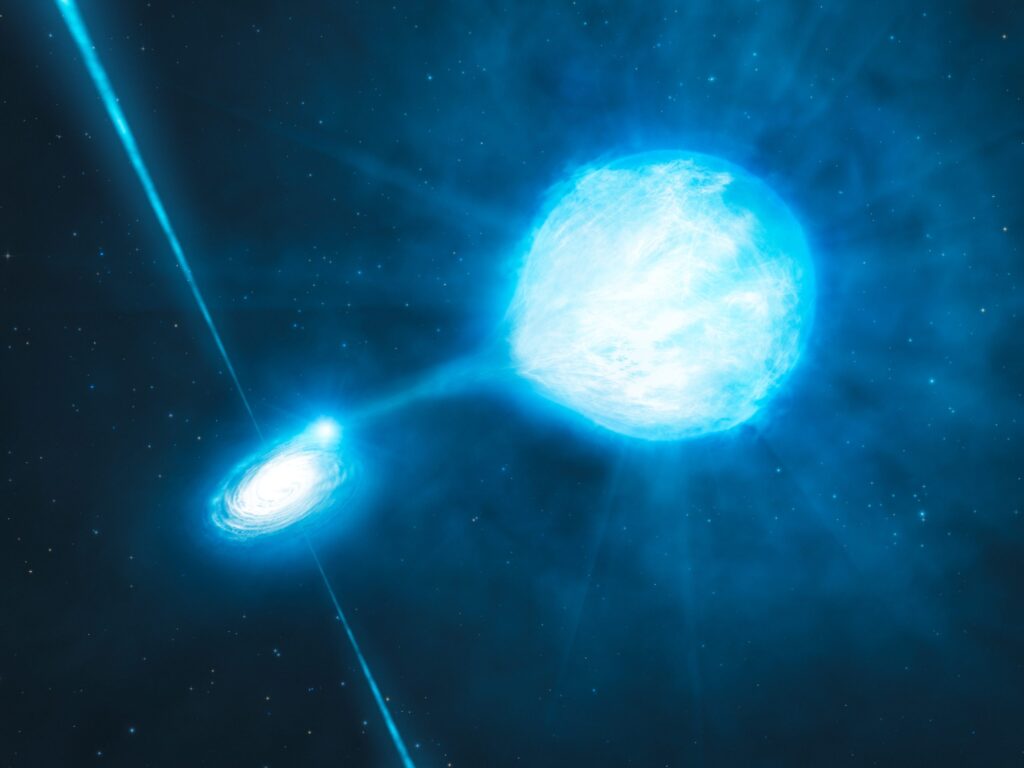
You know how Netflix’s algorithm somehow knows exactly what you want to watch next? Well, astronomers just proved that AI can spot cosmic disasters with similar precision. Meet SN 2023zkd—the strongest evidence to date of a supernova triggered by a black hole literally beating up its stellar companion until it exploded.
This isn’t your typical stellar death. Most stars die predictably, like a phone battery slowly draining. But SN 2023zkd spent four years getting progressively brighter before detonating in the cosmic equivalent of a TikTok-worthy double-take. The explosion peaked, dimmed, then blazed back to life 240 days later—behavior so bizarre that only artificial intelligence could piece together what was really happening.
AI Spots What Human Eyes Would Miss
The Zwicky Transient Facility in California uses machine learning algorithms to scan millions of stellar observations daily, flagging anything “evolving in an odd way.” When SN 2023zkd lit up in July 2023, located 730 million light-years away, the AI immediately knew something was wrong. Human astronomers would have taken months to notice the pattern.
“Our analysis shows that the blast was sparked by a catastrophic encounter with a black hole companion, and is the strongest evidence to date that such close interactions can actually detonate a star,” explains lead researcher Alexander Gagliano.
The Physics Behind Cosmic Violence
The physics behind this cosmic violence reads like a disaster movie. According to the research team’s analysis, a massive star—at least 30 times heavier than our Sun—was locked in a deadly dance with a black hole. Over years, the black hole’s gravitational grip stripped away layers of stellar material, creating shells of expelled matter surrounding the dying star. When the supernova finally detonated, its shockwave first hit the inner shell, then slammed into the denser outer material months later, creating that telltale double-peak brightness pattern.
Key Discovery Details:
- Multi-year warning signs: The star brightened slowly for approximately four years before exploding
- Double-peaked explosion: Unusual light curve with two distinct brightness peaks separated by 240 days
- Massive scale: Involved a star at least 30 times more massive than our Sun
- AI-powered detection: Machine learning algorithms spotted the anomaly in real-time
- Distant location: Occurred in a galaxy with relatively little active star formation
Co-author V. Ashley Villar notes: “2023zkd shows some of the clearest signs we’ve seen of a massive star interacting with a companion in the years before explosion.”
This discovery opens the door to an entirely new category of cosmic explosions—merger-triggered supernovae that traditional observation methods would miss entirely. With next-generation telescopes generating more data than human astronomers could ever analyze, AI systems like the one that caught SN 2023zkd will become astronomy’s most valuable detectives.
Your smartphone’s camera uses AI apps to enhance photos in milliseconds. Now that same technology is revealing the universe’s most violent secrets, one anomaly at a time.
Last modified: August 13, 2025







